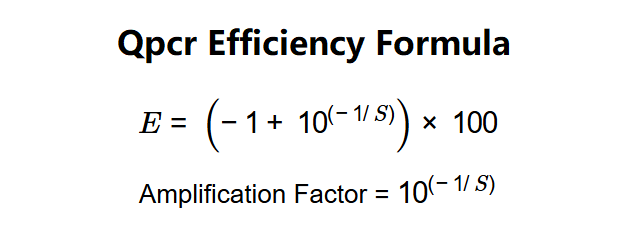 Home
Home
 Back
Back

Definition: This calculator computes the efficiency of a qPCR (quantitative Polymerase Chain Reaction) assay, expressed as a percentage, and the amplification factor per cycle, based on the slope of the standard curve.
Purpose: It is used in molecular biology to assess the performance of a qPCR assay, ensuring accurate quantification of DNA or RNA samples. Efficiency values between 90% and 110% are typically acceptable for reliable results.
The calculator uses the following formulas:
Where:
Steps:
Calculating qPCR efficiency is crucial for:
Example 1: Calculate the qPCR efficiency for a standard curve with a slope of -3.32:
Example 2: Calculate the qPCR efficiency for a standard curve with a slope of -3.58:
Q: What is qPCR efficiency?
A: qPCR efficiency measures how well a qPCR assay amplifies the target sequence per cycle, ideally doubling the target (100% efficiency). It is critical for accurate quantification of nucleic acids.
Q: Why is the slope negative?
A: The slope is negative because Ct values decrease as the log of template concentration increases in a standard curve. A slope of -3.32 indicates 100% efficiency, meaning the target doubles each cycle.
Q: What if my efficiency is outside 90-110%?
A: Efficiencies below 90% or above 110% indicate issues like poor primer design, suboptimal reaction conditions, or non-specific amplification. Optimization (e.g., adjusting annealing temperature, redesigning primers) is recommended.